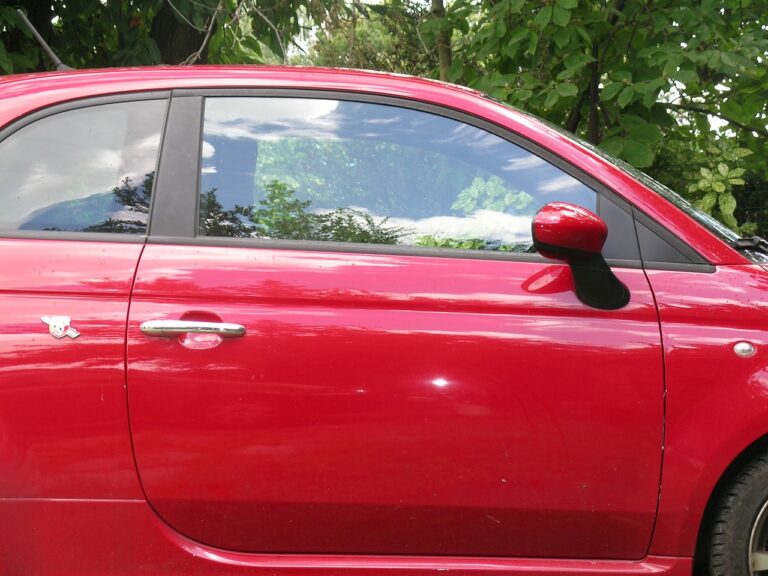Analyzing the Relationship Between Vehicle Weight and Crash Performance
11xplay reddy login registration, gold365 login, Skyfairs New ID: Analyzing the Relationship Between Vehicle Weight and Crash Performance
When it comes to vehicle safety, there are several factors to consider, with vehicle weight being a significant one. The weight of a vehicle can impact its crash performance in various ways, and understanding this relationship is crucial for both manufacturers and consumers. In this article, we will delve deep into how vehicle weight affects crash performance and why it’s essential to consider this factor when choosing a vehicle.
The Impact of Vehicle Weight on Crash Performance
One of the primary ways in which vehicle weight influences crash performance is through inertia. In simple terms, inertia is an object’s resistance to change in its state of motion. A heavier vehicle has more inertia, which means it will be more resistant to changes in speed or direction during a crash. This can help reduce the severity of the impact on the occupants.
Additionally, heavier vehicles tend to have stronger structures and more robust safety features to handle the increased forces in a crash. This can provide better protection for the occupants and reduce the likelihood of severe injuries.
On the flip side, lighter vehicles may not fare as well in a crash due to their lower inertia and potentially less robust construction. However, advancements in technology have allowed manufacturers to design lighter vehicles that still offer excellent crash performance through the use of high-strength materials and innovative safety features.
Overall, the relationship between vehicle weight and crash performance is complex, with multiple factors at play. It’s essential to consider not just the weight of the vehicle but also its structural integrity, safety features, and overall design when assessing its crashworthiness.
The Importance of Vehicle Weight in Crash Testing
Crash testing is a crucial aspect of evaluating a vehicle’s safety performance, and vehicle weight plays a significant role in these tests. Heavier vehicles are typically subjected to more rigorous crash tests due to their higher inertia and the potential for greater forces in a crash.
During crash testing, vehicles are evaluated for their ability to protect occupants in various crash scenarios, including frontal impacts, side impacts, and rollovers. The results of these tests help determine a vehicle’s crashworthiness and safety rating.
In general, heavier vehicles tend to perform better in crash tests than lighter vehicles, thanks to their increased inertia and stronger structures. However, this doesn’t mean that lighter vehicles are inherently unsafe. Many lighter vehicles on the market today offer excellent crash protection due to advanced safety features and materials.
Consumers should look for vehicles that have high safety ratings from reputable organizations such as the National Highway Traffic Safety Administration (NHTSA) and the Insurance Institute for Highway Safety (IIHS). These organizations conduct independent crash tests and provide valuable information on a vehicle’s safety performance.
Factors to Consider When Choosing a Vehicle Based on Weight
When choosing a vehicle, it’s essential to consider various factors beyond just weight. Here are some key considerations to keep in mind:
1. Safety Features: Look for vehicles that come equipped with advanced safety features such as airbags, anti-lock brakes, electronic stability control, and collision avoidance systems.
2. Crash Test Ratings: Check the crash test ratings of a vehicle from reputable organizations to ensure that it meets or exceeds safety standards.
3. Structural Integrity: Consider the overall design and construction of the vehicle to gauge its ability to withstand a crash and protect occupants.
4. Size and Weight: While heavier vehicles generally offer better crash protection, smaller vehicles can still be safe if they are equipped with the right safety features.
5. Maintenance and Upkeep: Regular maintenance is crucial for keeping a vehicle in top condition and ensuring that its safety features are functioning correctly.
FAQs
Q: Are heavier vehicles always safer than lighter vehicles in a crash?
A: Not necessarily. While heavier vehicles tend to perform better in crash tests due to their higher inertia and stronger structures, lighter vehicles can still offer excellent crash protection through advanced safety features and materials.
Q: What are some of the key safety features to look for in a vehicle?
A: Some important safety features to consider include airbags, anti-lock brakes, electronic stability control, collision avoidance systems, and adaptive cruise control.
Q: How can I ensure that my vehicle remains safe over time?
A: Regular maintenance is crucial for keeping a vehicle in top condition and ensuring that its safety features are functioning correctly. Be sure to follow the manufacturer’s recommended maintenance schedule and address any issues promptly.
In conclusion, vehicle weight plays a significant role in crash performance, but it’s just one of many factors to consider when choosing a vehicle for safety. By understanding how weight impacts crash performance and considering other key factors such as safety features and crash test ratings, consumers can make informed decisions to protect themselves and their loved ones on the road. Stay safe out there!







